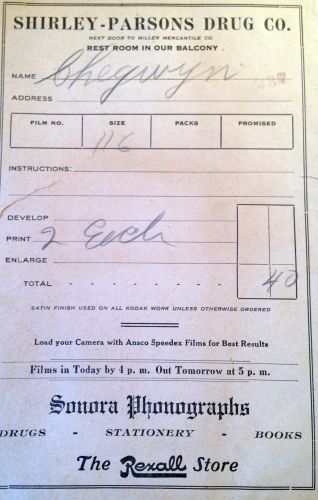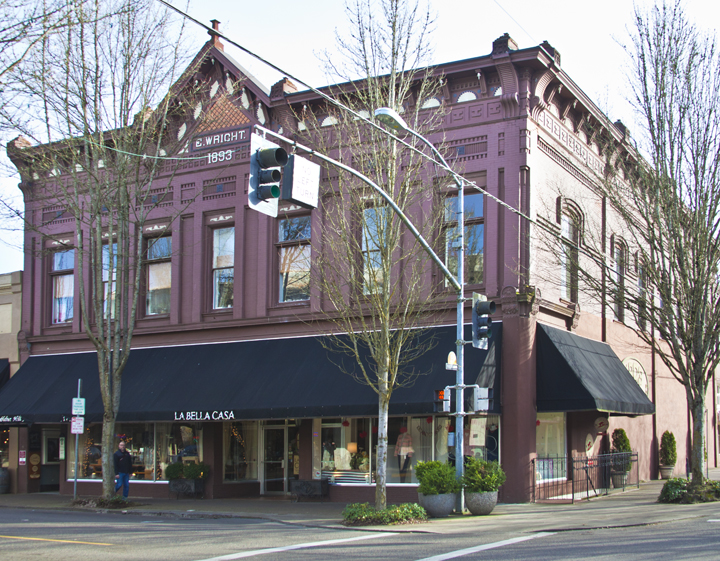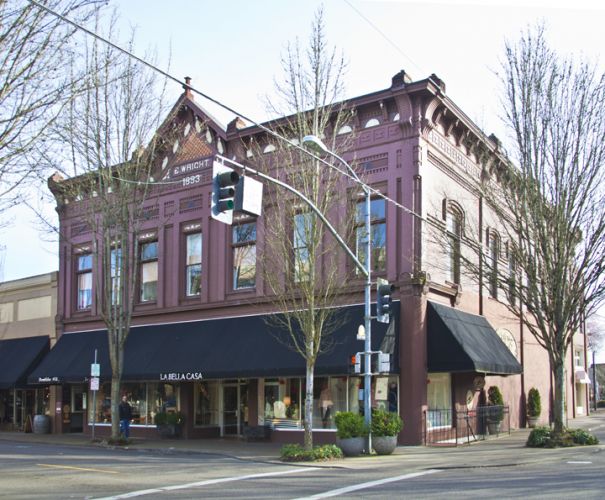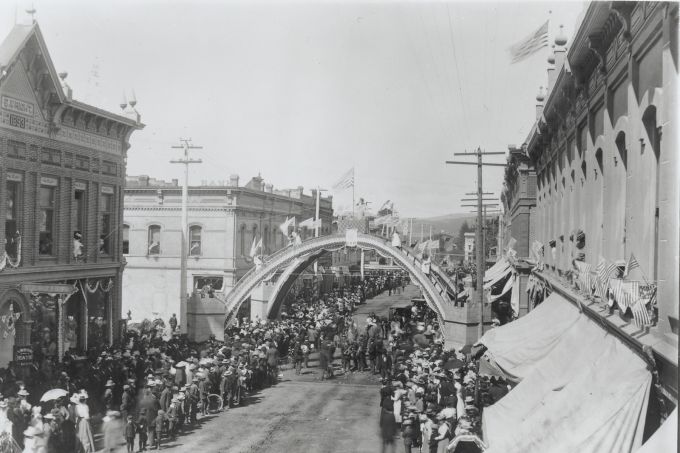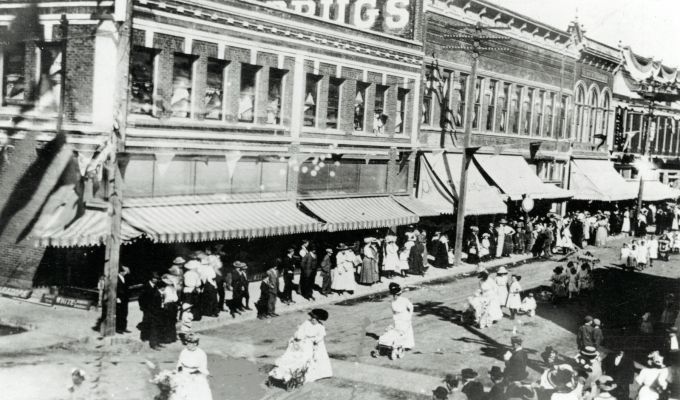Wright Building
Address: 406–428 NE Third Street
Construction Date: 1893
Current Business: La Bella Casa
Historic Name/Use: The Wright Building
Significance: Primary Significant
Style of Architecture: Queen Anne
1893: Constructed for $12,500.00
1898–1902: The Chicago Store
1903 and 1960s: Miller Mercantile Department Store
1983–1993: various shops
2000s-–Present: La Bella Casa
This 1893 Queen Anne-style commercial building is characterized by scallops, sun patterns, and intricate brickwork in the frieze. A central pediment reads E. Wright, 1893 and gives credit to the original owner.
A fancy brickwork belt course is located above and below the second story windows. The ground floor has a recessed central entrance and an open entrance to the second floor located at the east end of the building. A two-story addition was added to the west elevation at the south end, which lacks the metal cornice but contains second story windows identical to the original windows.
This building was known as the Wright Building, named after Elsia Wright, who came to Oregon from Illinois in 1871. Wright had a harness business and began constructing commercial buildings in McMinnville in 1892. He was also an investor in the Union Block property and was a notable citizen, serving the McMinnville City Council in the 1890s. The Wright Building cost $12,500 to construct and has a central-steam heating plan with three boilers located in the basement. This heat was sold to other downtown merchants until the 1960s.
The Wright Building was home to McMinnville’s second largest full service department store, Millers Department Store. Today the first floor is home to La Bella Casa, a boutique home decor store.
Primary Significant Contributing: Structures are classified as Primary Significant if they were built in or before 1912, or reflect the building styles, traditions, or patterns of structures typically constructed before this date. These buildings represent the primary period of construction and development in downtown McMinnville from initial settlement in 1881 to 1912, when city improvements and use of the Oregon Electric and Southern Pacific Railroad service promoted new construction in the downtown area.



